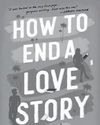Prøve GULL - Gratis
Honing the Power of Suggestion With Flash Fiction
Writer’s Digest
|May - June 2023
Tips for making the biggest impact with the fewest words.

When I’m writing a story, I think often of Roland Barthes’ question in The Pleasure of the Text: “Is not the most erotic portion of the body where the garment gapes?”
I don’t write romance, and I don’t write many sex scenes in my stories, but it’s the perfect writing metaphor for me, especially when I’m writing flash fiction, because tiny stories flow from tantalizing glimpses that lure the reader forward. As much as a writer might want to tell the whole story, a good miniature is created around hints and fleeting appearances. The story moves through the power of suggestion; it lives in the bliss of its mystery.
Before I wrote flash fiction, which is defined as a story less than 1,000 words, I’d trained myself as a novelist, and I thought writing vividly meant to write with a density of telling details, with words that grounded a reader and illustrated the world around them almost as if the author held a movie camera. That can be the case, certainly, but the more I wrote flash fiction (and particularly 100-word stories), the more I learned that there are other tools a writer can use to immerse the reader in the story: the art of excision, the art of compression, the art of omission, the art of writing with spaces and gaps and breaths, the art of less.
I recently wrote a book, The Art of Brevity, to better understand the craft of writing less. Here is how writing flash fiction taught me to write with the power of suggestion.
The Unexpected Benefits of Constraints
The word constraints tends to have a negative connotation. It speaks of restrictions and limits, and in writing, as in life, we tend to want as much freedom and space as we can get. But constraints can nourish your creativity.
Denne historien er fra May - June 2023-utgaven av Writer’s Digest.
Abonner på Magzter GOLD for å få tilgang til tusenvis av kuraterte premiumhistorier og over 9000 magasiner og aviser.
Allerede abonnent? Logg på
FLERE HISTORIER FRA Writer’s Digest
Writer’s Digest
100 Best Markets for Writers
A list of print and online publications looking for freelancers to contribute their knowledge on everything from pet care to finance and beyond.
65 mins
Yearbook 2026

Writer’s Digest
Memoir Plus
Add a bonus to your personal narrative for a marketing boost.
8 mins
Yearbook 2026
Writer’s Digest
Surefire Ways to Sell Your Children's Book
In my 28 years editing children's books, I've learned that publishing exists at the intersection of art and commerce.
5 mins
Yearbook 2026
Writer’s Digest
The ABCs of Freelance Success
Many freelance writers, especially those at the beginning of their careers, tend to place almost all of their professional focus on one specific component: craft.
5 mins
Yearbook 2026

Writer’s Digest
How to Write in Different Genres
Emiko Jean and Yulin Kuang share tips and strategies for how they successfully write in different genres and mediums.
8 mins
Yearbook 2026
Writer’s Digest
Small But Mighty
Why small presses might be the perfect home for your book.
8 mins
Yearbook 2026

Writer’s Digest
The Story Behind the Story
What's backstory, and what's it doing here anyway?
6 mins
Yearbook 2026

Writer’s Digest
2025 Year in Review
Publishing expert Jane Friedman recaps the biggest news in the industry.
8 mins
Yearbook 2026

Writer’s Digest
What Is Your Story Question?
When a story isn't working—when you know it's not quite coming together, when beta readers and critique partners confirm your fears but can't put a finger on why, or you're not getting offers from agents or publishers—savvy authors start trying to diagnose the issue by examining its component parts, like characterization, plot, and stakes.
6 mins
Yearbook 2026
Writer’s Digest
Writer's Digest 27th Annual 101 Best Websites for Writers
For the 27th year, Writer's Digest is shining a light on 101 websites with a goal of helping writers in a variety of ways.
26 mins
Yearbook 2026
Translate
Change font size

